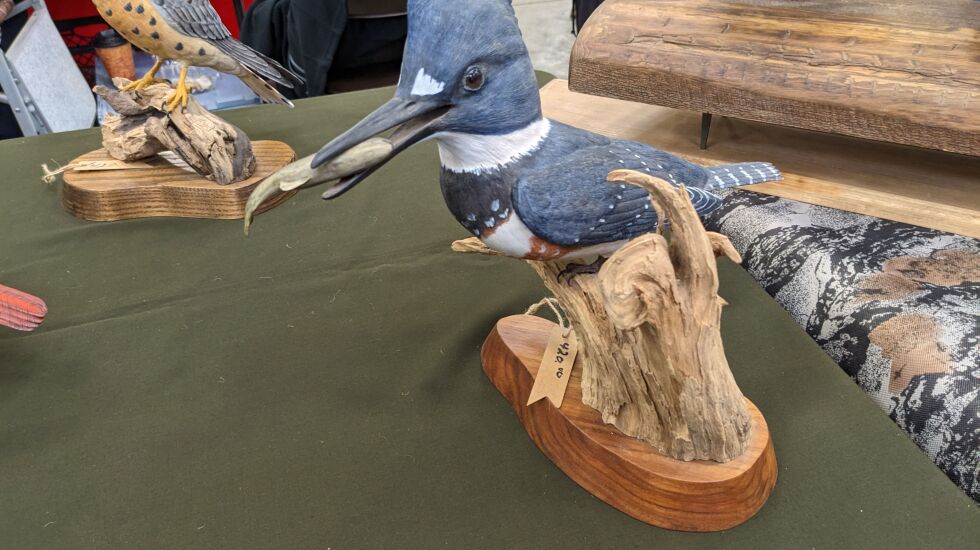
CHILLICOTHE, Ill. — Steve Quiram’s carving of a belted kingfisher, one of my favorite birds, with a minnow in its beak stopped me Sunday at the Henry Decoy Show at Three Sisters Park in Chillicothe.
I am drawn to artisans, craftsmen and artists in the outdoors world.
Quiram recalled being introduced to Richard Lemaster’s “The Art of the Wooden Bird,” on the making of decoys, by his wife’s uncle about 35 years ago.
Quiram came a long way, since.
“I started making smooth decoys and moved up from there to making fancier ones with feathers on them,” said Quiram, a retired painter (30 years at Illinois State)/house painter from Hudson.
One of the moves up proved fortuitous.
“I started making songbirds,” he said. “Because if I’m getting a customer who buys a $700 duck and his wife wants a $200 songbird, he ain’t gonna say, `No.’ “
When I asked what was his favorite, he gave a glimpse of the soul of an artist.
“I like kingfishers, I like any bird that looks nasty,” he said. “I like the sparrow hawks [American kestrels]. The wrens have a bad attitude. They’ll tear you up.”
That’s right, he said the little wrens had attitude.

“I just trained myself,” he said. “When you make a mistake, go again and keep learning. Mistakes make the best teacher you have. `How did I screw that up?’ “
His gaze swept the room filled with many carvers, some of them very accomplished, and said, “I can just about tell you who they learned from by what they carve.”
Quiram uses a band saw to rough cut the shape, then a sander and Foredom flexible shaft power tools for finishing touches. He burns the feathers in. He paints with acrylics because it dries quicker and because he learned how he can blend acrylics to make specific colors.
One reason his songbirds jump out is their color, such as American goldfinches, northern cardinals, yellow warblers and Baltimore orioles. The colors reach to grab you.
He also leans toward songbirds for other practical reasons. It is a lot easier to move/sell a small songbird, which can fit on a knickknack shelf, than a big space-eating great blue heron. And the smaller pieces are more economically priced. His wrens range from $140-$180.
But he understands the show-stopping power of bigger works, such as Jim Robison’s wood ducks coming out of a marsh or pheasants rising from corn stalks. Robison, of Hopewell, who has museum pieces, stopped by while Quiram and I chatted.
Quiram favors tupelo wood from Louisiana, in part because it takes paint better and is smoother.
This is not a job per se for Quiram, as he put it, “I am just keeping myself busy. If I was doing this for a living I would be broke.
“I am in it for the average person. I love to see people happy.”
Apparently, I touched something in Quiram because he rooted in a plastic bin, then dug out a snowy owl, made about a third of its actual size. The eyes of the snowy owl seemed to look inward piercingly enough to snatch my soul.
It was time.
Heading home, I stopped on the north end of Chillicothe to photograph the yard art of amassed old boat motors on the east side of Route 29. Think compare/contrast.
The show, first time at Three Sisters, was jammed. Stay up on the show on Facebook.
Quiram may be reached at (309) 824-1236.








